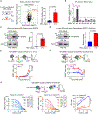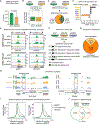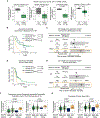SRSF2 plays an unexpected role as reader of m5C on mRNA, linking epitranscriptomics to cancer
- PMID: 38065062
- PMCID: PMC11090011
- DOI: 10.1016/j.molcel.2023.11.003
SRSF2 plays an unexpected role as reader of m5C on mRNA, linking epitranscriptomics to cancer
Abstract
A common mRNA modification is 5-methylcytosine (m5C), whose role in gene-transcript processing and cancer remains unclear. Here, we identify serine/arginine-rich splicing factor 2 (SRSF2) as a reader of m5C and impaired SRSF2 m5C binding as a potential contributor to leukemogenesis. Structurally, we identify residues involved in m5C recognition and the impact of the prevalent leukemia-associated mutation SRSF2P95H. We show that SRSF2 binding and m5C colocalize within transcripts. Furthermore, knocking down the m5C writer NSUN2 decreases mRNA m5C, reduces SRSF2 binding, and alters RNA splicing. We also show that the SRSF2P95H mutation impairs the ability of the protein to read m5C-marked mRNA, notably reducing its binding to key leukemia-related transcripts in leukemic cells. In leukemia patients, low NSUN2 expression leads to mRNA m5C hypomethylation and, combined with SRSF2P95H, predicts poor outcomes. Altogether, we highlight an unrecognized mechanistic link between epitranscriptomics and a key oncogenesis driver.
Keywords: NSUN2; RNA methylation; RNA modification; RNA splicing; SRSF2; SRSF2(P95H); cancer; epitranscriptomics; leukemia; m(5)C.
Copyright © 2023 Elsevier Inc. All rights reserved.
Conflict of interest statement
Declaration of interests F.F. is a co-founder of Epics Therapeutics (Gosselies, Belgium).
Figures







References
MeSH terms
Substances
Grants and funding
LinkOut - more resources
Full Text Sources
Medical
Molecular Biology Databases
Miscellaneous

